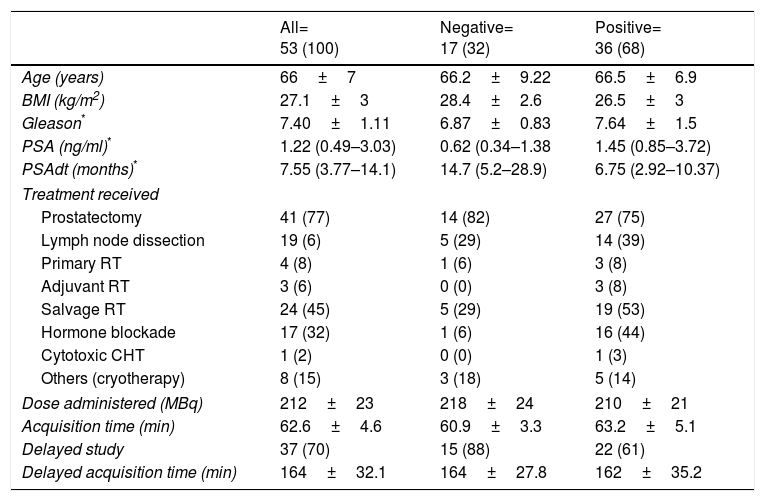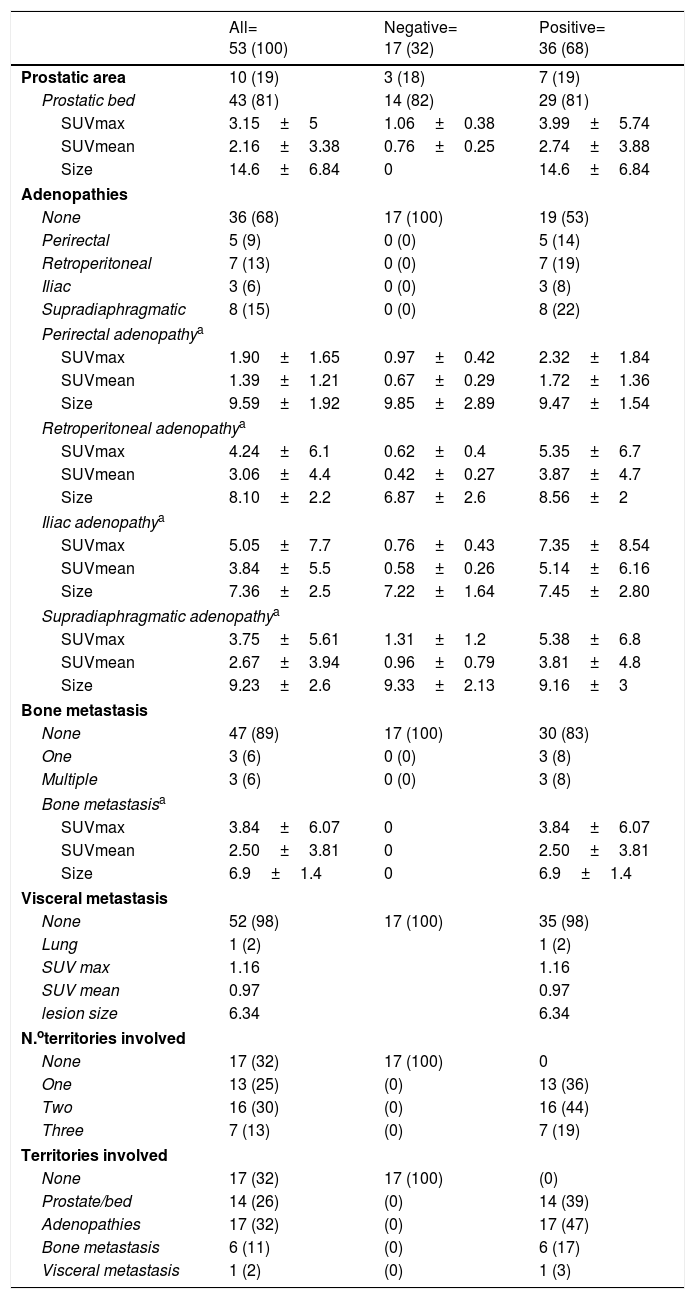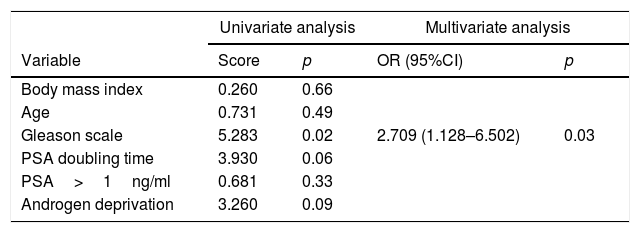Positron emission tomography (PET) studies with 68Ga-PSMA-11 (68Ga-HBED-CC-PSMA) have earned the attention of researchers, due to overexpression of PSMA in the tumoral tissues of prostate cancer. Our aim was to analyze the potential benefit of this radiotracer in the biochemical relapse of prostate cancer.
Material and methodsThis retrospective analysis included 53 studies, performed on 50 male prostate cancer patients referred due to biochemical recurrence. In all cases, previous imaging techniques were negative or inconclusive.
ResultsOf the 53 studies, 36 (68%) were positive. Significant differences were found between the positive and negative PET groups in Gleason's scale, PSA levels, PSAdt, late acquisition and the administration of androgen deprivation therapy during treatment (p<.05). Regarding PSA levels, 10 (48%) of the 21 patients with PSA<1ng/ml, obtained a pathological PET result. When the PSAdt was below six months, 86.7% of the patients obtained an abnormal PET. In the multivariate analysis, only Gleason's scale was associated independently with an abnormal PET result.
Conclusions68Ga-PSMA-11 PET shows a high disease detection rate in patients where other techniques showed negative or doubtful images. Almost 50% of patients with prostate cancer biochemical recurrence and low PSA levels (<1ng/ml) have active disease on 68Ga-PSMA-11 PET, precisely where other radiotracers lack sensitivity.
La tomografía por emisión de positrones (PET) con 68Ga-PSMA-11 (68Ga-HBED-CC-PSMA) se ha ganado la atención de los investigadores, gracias a que el PSMA se encuentra sobreexpresado en los tejidos tumorales del cáncer de próstata. El objetivo de este trabajo es analizar la rentabilidad diagnóstica de este radiotrazador en la recidiva del cáncer de próstata.
Material y métodosEstudio retrospectivo que cuenta con 53 estudios, realizados en 50 pacientes varones con cáncer de próstata remitidos por sospecha de recidiva bioquímica. Todos presentaban resultados negativos o dudosos en otras técnicas de imagen.
ResultadosDe los 53 estudios, 36 (68%) fueros positivos. Se encontraron diferencias significativas entre los estudios positivos y negativos en la escala de Gleason, los niveles de PSA, el PSAdt, el estudio tardío y el haber recibido durante el tratamiento un bloqueo hormonal androgénico (p<0,05). Respecto al valor del PSA, de los 21 pacientes con un PSA<1ng/ml, 10 (48%) obtuvieron una PET patológica. Cuando el PSAdt fue inferior a 6 meses, el 86,7% de los pacientes obtuvieron una PET anormal. En el análisis multivariante, solo la escala de Gleason se asoció de forma independiente con el hallazgo de una PET anormal.
ConclusionesNuestro estudio encontró una alta tasa de detección de enfermedad en estudios PET con 68Ga-PSMA-11 en pacientes en los que otras técnicas presentaban imágenes dudosas o negativas. Casi un 50% de los pacientes con recurrencia bioquímica de cáncer de próstata y niveles bajos de PSA (<1ng/ml) tienen enfermedad activa en la PET con 68Ga-PSMA-11, precisamente un nivel donde otros radiotrazadores tienen un peor umbral de sensibilidad.
Article

Revista Española de Medicina Nuclear e Imagen Molecular (English Edition)












